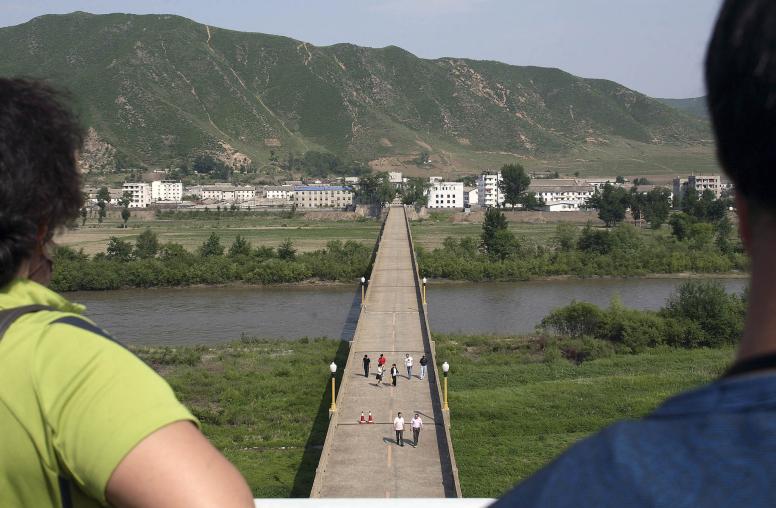Are the Korean Peninsula and the World Safer After Singapore? (Video)
Stephen Rademaker and Frank Aum weigh in on the historic summit between President Trump and Kim Jong Un and the prospects for peace.
Following the June 12 summit in Singapore between U.S. President Donald Trump and North Korea leader Kim Jong Un, the U.S. Institute of Peace asked leading experts Stephen Rademaker and Frank Aum whether the world is safer because of the summit and what differences—if any—there are between the pledges made in Singapore and previous agreements.
The historic meeting marked the first time leaders of the two countries had ever met. After months of speculation over whether the summit would even happen and a series of negotiations, the two leaders sat down and pledged to build the U.S.-North Korean relationship and a “lasting and stable peace regime on the Korean Peninsula.” Pyongyang also committed to the complete denuclearization of the Korean Peninsula and to repatriate the remains of Americans from the Korean War. Separate from the joint statement coming out of the summit, President Trump committed to end U.S. military exercises on the Korean Peninsula.
Joint Statement of President Donald J. Trump of the United States of America and Chairman Kim Jong Un of the Democratic People's Republic of Korea at the Singapore Summit
President Donald J. Trump of the United States of America and Chairman Kim Jong Un of the Democratic People's Republic of Korea (DPRK) held a first, historic summit in Singapore on June 12, 2018.
President Trump and Chairman Kim Jong Un conducted a comprehensive, in-depth and sincere exchange of opinions on the issues related to the establishment of new US-DPRK relations and the building of a lasting and robust peace regime on the Korean Peninsula. President Trump committed to provide security guarantees to the DPRK, and Chairman Kim Jong Un reaffirmed his firm and unwavering commitment to complete denuclearization of the Korean Peninsula.
Convinced that the establishment of new US-DPRK relations will contribute to the peace and prosperity of the Korean Peninsula and of the world, and recognizing that mutual confidence building can promote the denuclearization of the Korean Peninsula, President Trump and Chairman Kim Jong Un state the following:
- The United States and the DPRK commit to establish new US-DPRK relations in accordance with the desire of the peoples of the two countries for peace and prosperity.
- The United States and DPRK will join their efforts to build a lasting and stable peace regime on the Korean Peninsula.
- Reaffirming the April 27, 2018 Panmunjom Declaration, the DPRK commits to work toward complete denuclearization of the Korean Peninsula
- The United States and the DPRK commit to recovering POW/MIA remains, including the immediate repatriation of those already identified.
Having acknowledged that the US-DPRK summit -- the first in history -- was an epochal event of great significance in overcoming decades of tensions and hostilities between the two countries and for the opening up of a new future, President Trump and Chairman Kim Jong Un commit to implement the stipulations in the joint statement fully and expeditiously. The United States and the DPRK commit to hold follow-on negotiations, led by the US Secretary of State, Mike Pompeo, and a relevant high-level DPRK official, at the earliest possible date, to implement the outcomes of the US-DPRK summit.
President Donald J. Trump of the United States of America and Chairman Kim Jong Un of the State Affairs Commission of the Democratic People's Republic of Korea have committed to cooperate for the development of new US-DPRK relations and for the promotion of peace, prosperity, and the security of the Korean Peninsula and of the world.



